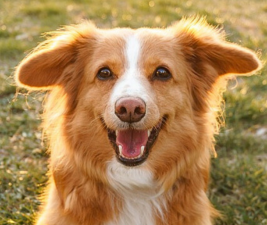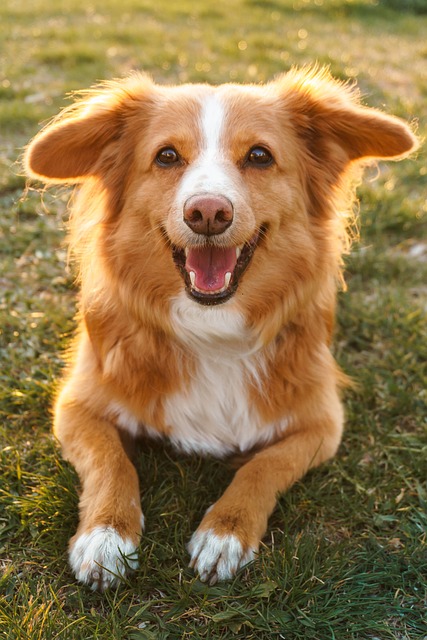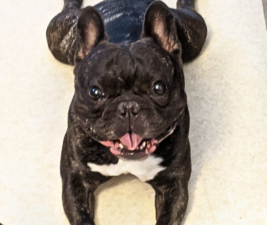Dogs speak volumes with their body language. Last week we talked about some of the signs of stress in dogs. This week we’re highlighting the signs of a happy dog.
If you were to ask a non-dog person how to tell if a dog is happy, the first thing most people would mention is a wagging tail. And they’d be wrong. The faster a dog’s tail is wagging the more aroused the dog is. And that’s not necessarily a good thing. Dogs on guard, or extremely agitated may have very active tails. They’re not telling the world how happy they are. They’re upset, alert, and not going to back down.
And, as we well know, there are lots of dogs who don’t have much of a tail at all. If we relied on tail motion to judge our dog’s mood, we’d be out of luck. Our tailless Bostons and Frenchie were born that way. To make up for it, they wiggle their entire back ends when they’re happy. Sometimes they wiggle right off the balance disc.
Speaking of wiggling
Wiggly is often used to describe a happy dog’s body language. Every bit of a happy, relaxed dog is wiggly, from a slowly-moving tail to relaxed ears, to the puppy-dog smile you love.
And dogs do, in fact, smile when they’re happy. The mouth is slightly open, with lips a bit pulled back. The eyes are slightly squinty, and the eyebrows go up. Studies have shown that dogs have developed these traits to mimic human behavior. Or, over time, people probably preferred dogs exhibiting these characteristics, allowing them to thrive in society. That’s probably circular reasoning. We’ll never really know which came first, the chicken or the egg.
Soft ears, soft eyes
The overall impression of a happy dog is one of relaxation. Their ears are relaxed, their eyelids soft, their tongues may even loll out the side of their mouths. There’s nothing tense or nervous when a dog is truly happy.
Of course the epitome of a happy dog’s posture is the play bow – front end on the ground, butt in the air, wiggling for all they’re worth and completely joyous. If your dog is anything like ours, it can also be pretty noisy while this is happening. But there’s even a difference between the barking of a happy dog and one that’s anxious or fearful. Happy barks tend to be shorter and higher in pitch than a bark of distress.
You know a happy dog
People who really know dogs recognize the signs of a happy dog when they see it. Whether consciously or not, we’ve absorbed the body language signals our dogs show. With your own dog, you can tell their mood from a distance, just by seeing their posture. If you’re just arriving home, you know your dog will show you every possible expression of joy.
Enjoyed this post? Click here to sign up for the weekly newsletter and never miss another!












